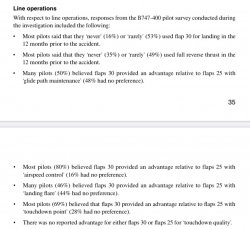- Joined
- Nov 12, 2012
- Posts
- 31,145
- Qantas
- Platinum
- Virgin
- Platinum
- Star Alliance
- Gold
When a hull-loss accident occurs, and is subject to a report (and sometimes I think, a preliminary report is released), how do the conclusions of those reports get a) disseminated and b) acted on, within an airline which has aircraft of the same type.
i'm wondering if its a 'corporate' engagement, dealt with from 'Chief Pilot' area, or above and then directed below, or if all relevant levels of the airline are engaged in the airline's response - comments from pilots etc (beyond the mandatory stuff). I imagine that it varies widely between airlines - how do Aussie airlines deal with it? Is there any regulatory oversight here that mandates how it will be dealt with internally beyond the mandatory stuff.
i'm wondering if its a 'corporate' engagement, dealt with from 'Chief Pilot' area, or above and then directed below, or if all relevant levels of the airline are engaged in the airline's response - comments from pilots etc (beyond the mandatory stuff). I imagine that it varies widely between airlines - how do Aussie airlines deal with it? Is there any regulatory oversight here that mandates how it will be dealt with internally beyond the mandatory stuff.

















